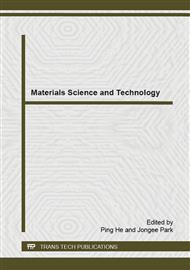p.165
p.171
p.175
p.183
p.191
p.197
p.205
p.213
p.219
A Hardware-in-the-Loop Simulation Test Bench for Subway Train Brake Systems
Abstract:
A hardware-in-the-loop (HIL) simulation test bench for subway train brake systems is built in this paper to avoid the high costs of brake system field tests and maintain the reliability of test results. The HIL simulation test bench consists of a simulation part a hardware part. The simulation part includes a train model and a GUI. The hardware part mainly consists of six pneumatic brakes and a driver controller, which is used to generate brake commands. Signal transmissions between the simulation and hardware parts are realized using DAQ and signal transformation boards, as well as an MVB network. Test results suggest that the HIL test bench proposed is able to reproduce the braking behaviours of a train rather well, thus it can be used to carry out train braking tests in place of the costly field tests in some occasions.
Info:
Periodical:
Pages:
219-224
Citation:
Online since:
December 2014
Authors:
Keywords:
Price:
Сopyright:
© 2015 Trans Tech Publications Ltd. All Rights Reserved
Share:
Citation:


